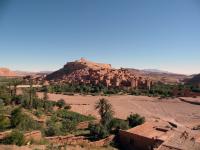
Morocco’s organic farming sector has been experiencing rapid growth in the last years, and it does not appear to be slowing. Besides the Green Morocco Plan, the North African country has made serious efforts to promote organic farming.
Morocco specializes in two types of organic products: medicinal and aromatic plants, and products derived from cultivated plants. According to figures provided by AgriMaroc, following the 2017/2018 campaign for organic farming, Morocco’s organic agricultural land reached 282,480 hectares. At least 11,000 hectares are dedicated to cultivated species, with approximately a thousand hectares of crops currently undergoing conversion to organic production. “Morocco is working to raise the profile of its organic farming segment both at home and abroad by taking advantage of the rising demand for fresh and value-added organic products,” explains an Oxford Business Group analysis.
After decades of Morocco’s organic agricultural sector’s steady growth, Morocco saw its first organic fair called Bio Expo Morocco, organized by Club des Entrepreneurs Bio (CEBio). Most organic farms are located in Agadir, Azemmour, Beni Mellal, Fez, Marrakech, Rabat, Taroudant, and Taza, while most of Morocco’s organic fruit comes from Marrakech and Agadir, largely due to the favourable climate. The Souss-Massa valley also stands out as the biggest market for organic, and other coastal regions such as Azemmour and Rabat also qualify for organic production. But organic medicinal and aromatic plants can be found in almost all Moroccan regions. The organic sector in Morocco generated 120,000 tonnes of produce in 2019, compared to the 40,000 tonnes produced in 2010.
The majority of organic produce from Morocco is intended for export. As Morocco developed its organic sector, produce exports experienced significant growth, from 7,230 tonnes in 2007 to 17,000 tonnes in 2019. Most exports consist of fruits, fresh vegetables, and processed products such as food, cosmetics made from argan oil, canned green beans, as well as products from medicinal and aromatic plants. The Oxford Business Group notes that the majority of demand for organic products comes from overseas, with a well-established export market in Europe. The main destinations for Moroccan exports are France, Spain, Italy, Germany, the Netherlands, Scandinavia, and Lithuania. Nonetheless, organic products are also starting to gain popularity among Moroccan consumers.
Currently, the biggest challenge for Morocco’s organic sector is “increasing output and utilizing new technologies to maintain economic viability,” according to the Oxford Business Group, although the growing interest in local organic producers could help overcome the obstacle. The growing interest in the “bio” label comes at a time as Morocco is increasing its efforts in maintaining biodiversity, and showing exceptional long-term planning when it comes to renewables and environmental issues.
Morocco launched two new environmental strategies: Green Generation 2020-2030 and Forests of Morocco. The first aims to create new income-generating activities, mainly in favour of young people in rural areas, while the other seeks to encourage the emergence of an agricultural middle class and to make the sector a lever of socio-economic development in Morocco.
Source: Morocco World News



